As the calendar flips to Q2, investors are dusting off their crystal balls and peering into the market’s future. With inflation still trying to steal the spotlight and interest rates doing their best impression of a rollercoaster, navigating this financial maze might feel like herding cats. But fear not! The Q2 market outlook is here to help make sense of the chaos, offering insights that could turn uncertainty into opportunity.
Table of Contents
ToggleOverview of Q2 Market Outlook
Q2 presents a challenging landscape for investors. Ongoing inflation remains a primary concern, with rates exceeding 5% in many regions. Interest rate fluctuations contribute to uncertainty, as central banks adjust policies to combat rising prices. This environment necessitates careful analysis of sector performance.
Equities show mixed signals moving into Q2. Volatility in technology stocks has caught the attention of both bullish and bearish investors. Financial services are adapting to tighter credit conditions, impacting lending practices. Consumer discretionary sectors are likely to face headwinds as inflation pressures consumer spending.
On the bond front, yields may rise further as investors reassess economic forecasts. The bond market reflects concerns about long-term growth despite short-term resilience. Corporate bonds face scrutiny, particularly in sectors sensitive to interest rate changes.
Emerging markets provide diversification opportunities but come with higher risks. Currency fluctuations and geopolitical tensions could affect returns. Investors should prioritize regions with stable economic indicators and favorable demographics.
Sector rotation will likely occur as investors respond to economic signals. Defensive stocks may gain traction as market participants seek stability. Growth stocks, while attractive, carry higher risks due to rate sensitivity.
Market sentiment plays a vital role in shaping outcomes in Q2. Analysts predict fluctuations influenced by economic data releases and central bank communications. Successful navigation of this environment hinges on agility and informed decision-making.
Key Economic Indicators

Economic indicators signal the second quarter’s potential. Investors should closely monitor these metrics to gauge market conditions.
GDP Growth Projections
GDP growth projections show varying forecasts across regions. Many experts anticipate moderate growth, particularly in developed economies. The expected global GDP growth rate sits around 3% for 2023, reflecting recovery amidst past challenges. Emerging markets, however, are projected to outperform, with growth estimates hovering near 5%. Policymakers’ responses to inflation pressures could influence these projections. Market participants must stay alert to changes that could impact these growth trajectories.
Employment Trends
Employment trends fluctuate as businesses adapt to economic conditions. Unemployment rates remain low, averaging approximately 4%, indicating a robust job market. Job creation continues but transitions towards sectors resilient to inflationary pressures. Wage growth is apparent, with average hourly earnings rising about 4% year-over-year. Consumer spending could feel the effects of these trends, as increasing wages may lead to stronger retail performance. Investors can gain insights by tracking employment data, which often correlates with overall economic health.
Market Segments to Watch
Investors should closely monitor key market segments as Q2 developments unfold. Certain industries may experience notable fluctuations, driven by economic conditions and consumer behaviors.
Technology
Growth in the technology sector remains critical but uneven. Companies are facing pressure due to fluctuating interest rates and inflationary concerns. Major firms in software and cloud computing are anticipated to show resilience, as remote work continues to sustain demand. Conversely, hardware manufacturers might struggle amid rising production costs. Investors should watch earnings reports closely to gauge performance and identify potential buying opportunities.
Consumer Goods
The consumer goods sector experiences strain with inflationary pressures affecting purchasing power. Retailers may adjust pricing strategies to maintain margins, impacting sales volume. Essential goods, such as food and household products, are likely to demonstrate stability, while discretionary items face headwinds. Observing consumer sentiment will be crucial; shifts in spending habits may provide insights into long-term trends. Adaptations in marketing strategies could also signal responsiveness to shifting consumer preferences.
Risks and Challenges
Investors face several risks as Q2 progresses, notably from inflation and geopolitical tensions. Understanding these factors is crucial for navigating the market effectively.
Inflation Concerns
Inflation persists as a significant risk, with rates surpassing 5% in various regions. Rising costs directly impact consumer purchasing power, influencing spending patterns. Prices for essential goods remain stable; however, discretionary items face downward pressure. Many analysts expect ongoing inflation to challenge sectors like consumer discretionary. Increased operational costs may lead to reduced profit margins for businesses, affecting investor confidence. Monitoring inflation indicators helps investors anticipate market movements.
Geopolitical Tensions
Geopolitical tensions create additional uncertainties in the market landscape. Conflicts and trade disputes may disrupt supply chains, leading to increased costs in affected sectors. Currency fluctuations linked to geopolitical events can create volatility in emerging markets, impacting investment strategies. Investors must keep an eye on international relations, as they often influence market stability. Heightened tensions can also prompt central banks to adjust monetary policies, further complicating economic forecasts. Observing these developments is essential for informed decision-making in Q2.
Investment Strategies for Q2
Investors should consider a diversified approach to navigate the complexities of Q2. Focusing on defensive stocks provides a buffer against inflation pressures. Analysts suggest prioritizing sectors like utilities and consumer staples, which generally perform well in uncertain economic environments.
Allocating funds towards technology stocks remains vital. Major firms in software and cloud computing show resilience despite market fluctuations. Evaluating growth potential in emerging technologies may yield opportunities, especially in innovative sectors.
Corporate bonds provide another avenue for investors to explore. Investors might find value in high-quality corporate bonds in interest-sensitive sectors, although caution is required due to rising yields. Monitoring interest rate movements ensures informed decisions when diversifying fixed-income portfolios.
Emerging markets can offer attractive alternatives, given their projected growth of nearly 5%. However, investors must weigh the higher risks associated with currency fluctuations and geopolitical tensions. Conducting thorough research on these markets enhances understanding of the inherent challenges.
Keeping an eye on consumer sentiment will guide strategies for the consumer discretionary sector. Retailers are adjusting pricing strategies in response to inflation, suggesting a need for investors to focus on companies with strong pricing power. Identifying shifts in consumer habits can signal potential investment opportunities.
Risk management plays a crucial role in this landscape. Staying updated on key economic indicators, such as GDP growth and employment rates, helps investors anticipate market movements. Being prepared for unexpected developments allows for agile decision-making in Q2.
The evolving environment offers both challenges and opportunities. Maintaining a flexible investment strategy will be essential as market conditions continue to shift throughout the quarter.
As Q2 progresses investors must remain vigilant and adaptable to the shifting market dynamics. The interplay of inflationary pressures and fluctuating interest rates will continue to shape investment strategies. By focusing on sectors that demonstrate resilience and exploring opportunities in emerging markets investors can position themselves for potential gains.
Monitoring consumer sentiment and economic indicators will be essential for making informed decisions. A diversified approach that includes defensive stocks and corporate bonds can help mitigate risks. Staying informed about geopolitical developments will also play a critical role in navigating this complex landscape. With a proactive mindset and a willingness to adjust strategies investors can effectively navigate the challenges and seize opportunities in the second quarter.








